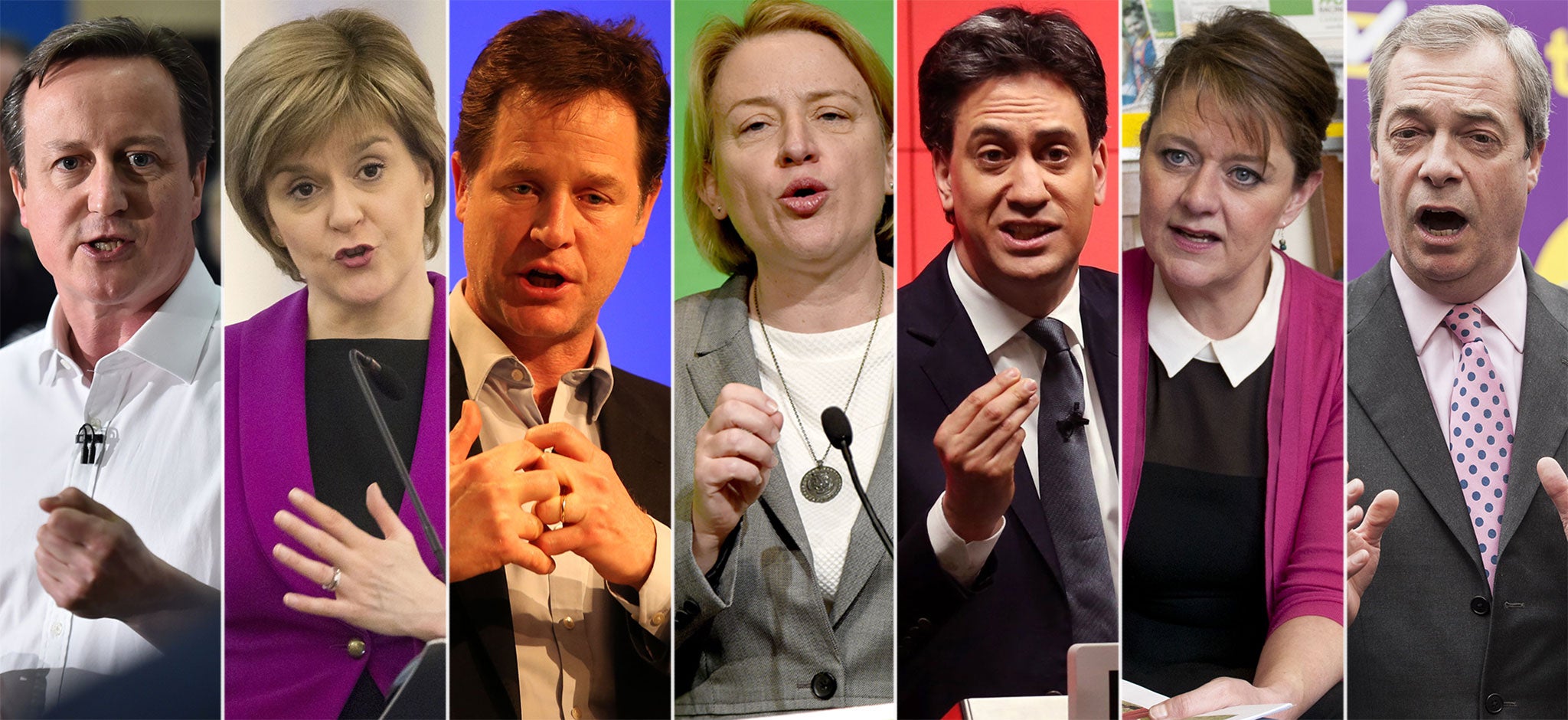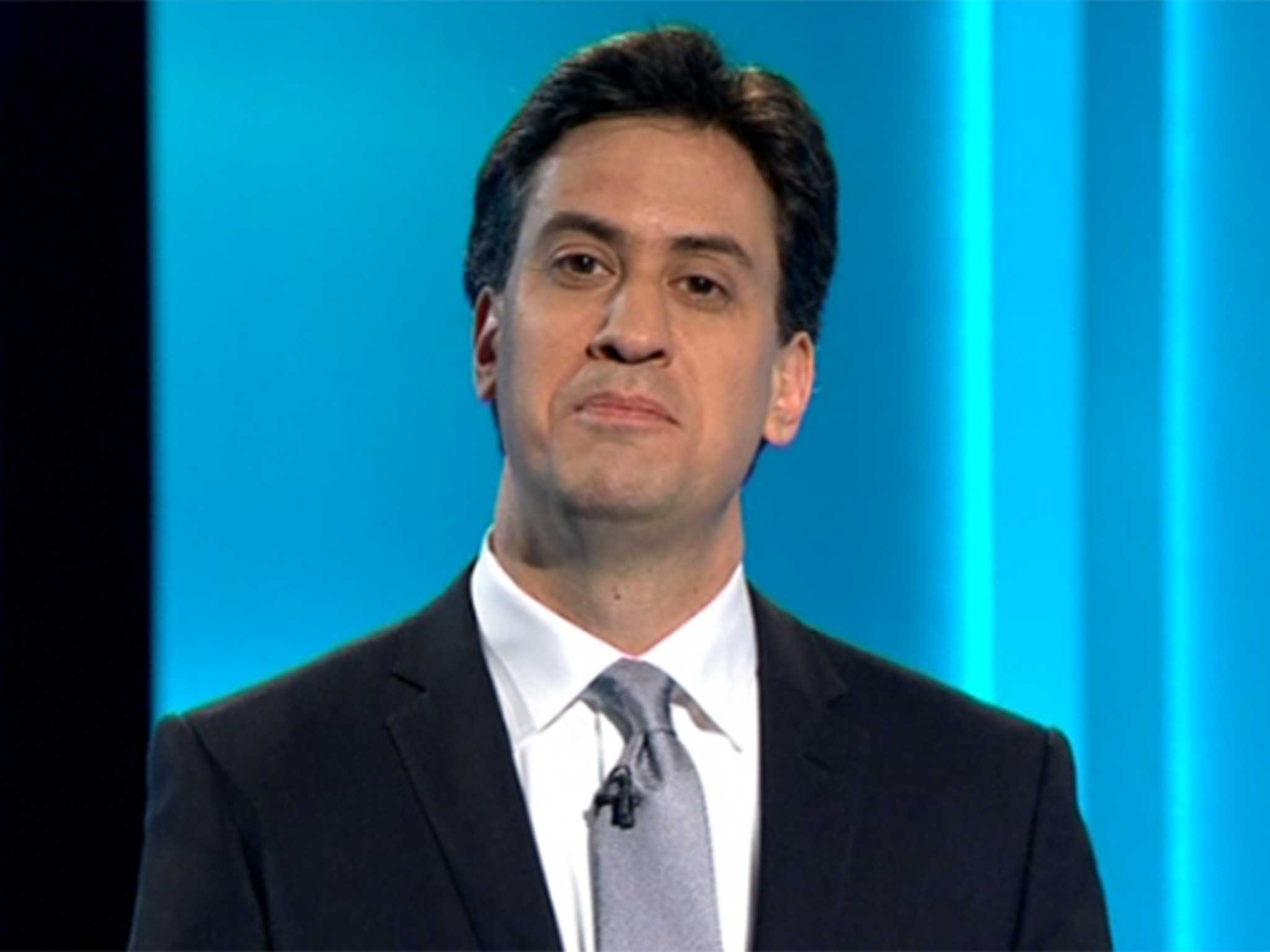General Election 2015: The end of our two-and-a-half party system is producing some unexpected twists
Inside Westminster

Your support helps us to tell the story
From reproductive rights to climate change to Big Tech, The Independent is on the ground when the story is developing. Whether it's investigating the financials of Elon Musk's pro-Trump PAC or producing our latest documentary, 'The A Word', which shines a light on the American women fighting for reproductive rights, we know how important it is to parse out the facts from the messaging.
At such a critical moment in US history, we need reporters on the ground. Your donation allows us to keep sending journalists to speak to both sides of the story.
The Independent is trusted by Americans across the entire political spectrum. And unlike many other quality news outlets, we choose not to lock Americans out of our reporting and analysis with paywalls. We believe quality journalism should be available to everyone, paid for by those who can afford it.
Your support makes all the difference.All roads in this general election lead back to 1992. David Cameron, then an eager 25-year-old beaver at Conservative HQ, relaunched his party’s “Labour tax bombshell” from that election this week, claiming that Ed Miliband would cost the average working household more than £3,000 by 2020. The bomb was less devastating than the 1992 model, and was quickly defused by the respected Institute for Fiscal Studies, which rubbished it.
Labour minds also turn frequently to 1992. On Saturday Mr Miliband will address a big rally of the Labour faithful in Warrington. The aim is to show confidence without falling into the trap of Neil Kinnock’s infamous Sheffield rally in 1992. “Neil’s problem was hubris,” one Labour frontbencher said yesterday. “Our problem is the opposite.”
Mr Kinnock was ahead in the polls and hopeful that Labour would be the largest party in a hung parliament. But in the campaign’s final week, when people took a closer look at Labour and him, they shied away. Today some Labour figures fear privately that this election will also “break late” for the Tories when people make a “forced choice.” The Tories desperately hope that will happen, but increasingly fear it won’t.
In other ways, 2015 is very different to 1992. The seven-way leaders’ TV debate on Thursday was a reminder of how much our politics has changed. In 1992, the Tories and Labour won 76 per cent of the votes between them. Today they average 67 per cent.
The once mighty two parties will both try to make May 7 a “forced choice”. But millions of voters may decide it is a “false choice” and vote for another party. Knowing this, both the Tories and Labour try to mobilise their core vote, rather than reach out to floating voters. Mr Cameron often spoke to Tories who have switched to Ukip in Thursday’s debate. On the doorstep, Labour matches his scare stories on tax with unsubstantiated claims that the Tories would raise VAT and privatise the NHS. And both parties wonder why many people don’t trust politicians.
ITV’s two-hour debate was refreshing because it forced the two biggest parties to compete with the new kids on the block. It remains to be seen whether the Scottish National Party, Ukip and the Greens can turn their opinion poll ratings into seats. The SNP has a very good chance of doing so, and its prospects will be enhanced by Nicola Sturgeon’s strong performance in the debate. But Ukip and the Greens may be disappointed.
Whatever happens on May 7, a lot of voters who reject the two main parties are going to feel cheated by our antiquated first-past-the-post system. Our politicians know it, even if they oppose reform. “It is going to become a huge issue,” one Tory strategist admitted.

The end of our two-and-a-half party system is producing some unexpected twists. The Tories, who defeated Lib Dem proposals to bring in the alternative vote in the 2011 referendum, would probably win power under it now because they would be the second preference of many Ukip voters. The Lib Dems, who would demand proportional representation for local authority elections in any post-election talks, could be saved by the first-past-the-post system they want to abolish. Nick Clegg did well in the debate but was never going to score highly in the post-match polls. His party may do much better than the national polls suggest in the 57 seats it is defending.
There was relief in both Labour and Tory circles that their man emerged unscathed and at level pegging with the other candidate for prime minister in the polls after the debate. Labour aides insist the Tory strategy of portraying Mr Miliband as unfit for the job has failed; he is very much in the game. The Tories insist Mr Cameron had the most to lose on Thursday, and point to the surveys showing him well ahead as the best PM.
And so the stalemate between the two parties continues. The Labour brand is stronger than its leader. People like its values. Conversely, the Tory leader is liked more than his party, which still struggles to convince voters its instincts are not “nasty” and that it stand ups for ordinary people rather than its rich friends. Whether people vote for the leader or the brand may decide which party comes out on top.
Although there was no knockout blow on Thursday, if there was a winner it was Ms Sturgeon. The SNP leader was much more appealing than her predecessor Alex Salmond would have been. The Tories are busily talking up the SNP. They are happy Easter bunnies because they calculate that an SNP surge could damage Labour in both Scotland and England.
Yet the Tories are playing with fire – and the Union they support could be destroyed by it. A Labour rout in Scotland could leave the Tories as the largest party. But there is no guarantee Mr Cameron would win enough Commons seats, to get his Queen’s Speech approved -- even if he joined forces with the Lib Dems and Northern Ireland’s Democratic Unionist Party. The Tories may live to regret becoming the SNP’s temporary cheerleaders: Ms Sturgeon could join Labour in voting down a Cameron Queen’s Speech and then put Mr Miliband into Number 10. It would be strange, and have far-reaching consequences for the UK. But stranger things have happened.
The Independent has got together with May2015.com to produce a poll of polls that produces the most up-to-date data in as close to real time as possible.
Click the buttons below to explore how the main parties' fortunes have changed:
All data, polls and graphics are courtesy of May2015.com. Click through for daily analysis, in-depth features and all the data you need. (All historical data used is provided by UK Polling Report)
Join our commenting forum
Join thought-provoking conversations, follow other Independent readers and see their replies
Comments